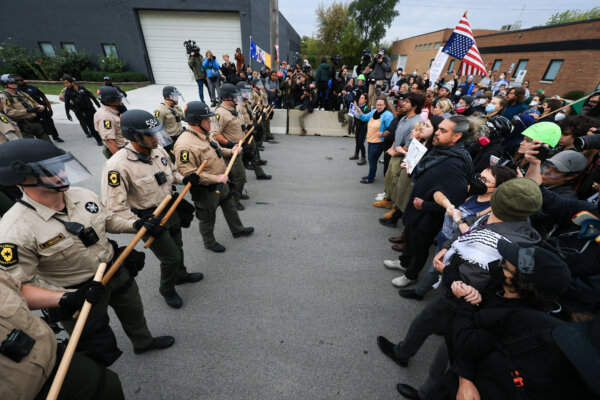‘Data dismantles the shortage narrative, revealing a system in which loopholes are used, recruitment requirements minimized and federal certifications freely obtained for foreign labor – even as qualified Americans are sidelined’
![]()
For the graduates who cannot find jobs and the laid-off tech workers still searching for work, it can feel demeaning to hear Big Tech companies continue to claim there is a labor shortage when, in reality, there are more than enough willing and able Americans ready to step in. The repeated message that there are “no qualified Americans” does more than insult them: It leaves lasting damage that cannot be undone by simply finding new employment.
However, Big Tech’s claims do not stand up to actual documented evidence. In fact, Amazon’s own filings with the U.S. Department of Labor comprise a comprehensive record of the company’s immigration submissions. And that data dismantles the “shortage” narrative, revealing a system in which loopholes are used, recruitment requirements minimized and federal certifications freely obtained for foreign labor – even as qualified Americans are sidelined.
Between 2009 and 2024, Amazon filed more than 111,000 petitions for H-1B visas, a program intended for positions requiring “specialized knowledge” that cannot be filled by any qualified U.S. workers. Of these filings, 39,012 were new H-1B visa applications, while 72,726 were renewal applications for existing foreign workers.
In addition to its H-1B activity, Amazon also made extensive use of the Department of Labor’s Program Electronic Review Management, or PERM, process. Between 2020 and 2024, the company filed
21,012 labor certification applications through PERM, an essential step for sponsoring foreign workers for permanent residency in the United States.
How does the PERM process work?
The PERM program is the first step in sponsoring a foreign worker for a U.S. green card (permanent residence). Before applying, an employer must test the labor market to determine if there are any qualified, willing and available U.S. workers for the job. That is the U.S. Department of Labor’s process for requiring employers to show they made a genuine effort to hire an American before receiving approval to sponsor a foreign worker.
Yes, despite Amazon tech jobs being highly sought after by Americans, the company claimed that for all 21,012 roles, no qualified U.S. workers applied – essentially asserting that only the foreign workers they hired were interested in, or qualified for, those positions.
Regulation on Qualifications for the Job:

The batch advantage: Circumventing the law and regulations to avoid hiring Americans
Wage-level “batching” is when a company reuses the same government-issued prevailing wage determination for multiple green card applications instead of getting a fresh wage review for each job. In Amazon’s case, the company obtained only 3,875 wage determinations but used them to file 21,012 applications, allowing Amazon to lock in older, lower wage rates, keep salaries down and push applications through faster while doing less recruitment for each role. About 82% of Amazon’s green card applications reused wage determinations, meaning the vast majority did not have a wage rate specific to that job.
How much could Amazon save by paying below-market wages? It’s all about cheaper labor, not skilled labor
This estimate is calculated by comparing the true median wages for these roles, sourced from multiple independent wage datasets, to the prevailing wage rates Amazon used when sponsoring green cards. The methodology assumes that for each job level, the difference between the market median and the prevailing wage represents the per-position savings, multiplied by the number of positions at that level.
Level 1 wages: $285 million saved
Level 2 wages: $434 million saved
Level 3 wages: $20 million saved
These figures are conservative estimates, while the real savings could be significantly higher. Under the prevailing wage system, the “or similarly employed” provision requires employers to use whichever is higher: the local average wage for the occupation or the wage paid to workers in similar roles. In Big Tech, market rates are typically far above local averages. If Amazon had followed this rule as intended, many roles would have been pegged to the higher Big Tech pay scale, not the lower local rate Amazon appears to have used.
This suggests Amazon did not apply the provision as required, allowing it to lock in far lower wages than the market rate for similar work in their industry.
While Amazon claims there were no qualified Americans for these roles and that the foreign workers sponsored were on “high-skilled” visas, the overwhelming use of Prevailing Wage Levels 1 and 2 tells a different story. These wage levels are typically reserved for entry-level workers with little or no experience, such as recent college graduates. This means Amazon is either abusing the prevailing wage system or abusing the visa program itself. By sponsoring these workers at entry-level rates, Amazon not only undercuts wages for equivalent American jobs, but also eliminates opportunities for U.S. graduates and early-career professionals. Once these foreign workers obtain permanent residency, they remain permanently in an already oversaturated labor market, further reducing opportunities for Americans.
Amazon’s recruitment tactics: Can’t find qualified Americans … or not looking?











